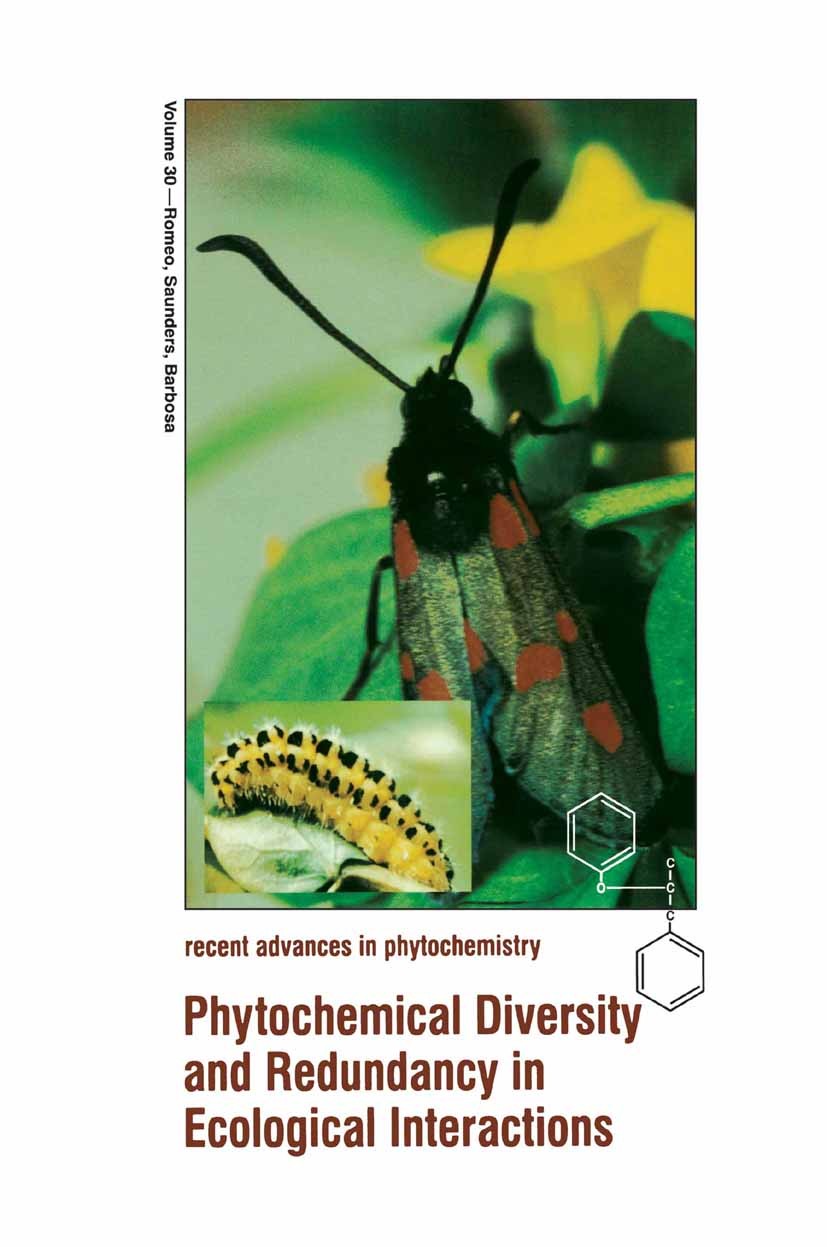| 书目名称 | Phytochemical Diversity and Redundancy in Ecological Interactions | | 编辑 | John T. Romeo,James A. Saunders,Pedro Barbosa | | 视频video | http://file.papertrans.cn/748/747819/747819.mp4 | | 丛书名称 | Recent Advances in Phytochemistry | | 图书封面 |  | | 描述 | Diversity within and among living organisms is both a biological impera tive and a biological conundrum. Phenotypic and genotypic diversity is the critical currency ofecological interactions and the evolution of life. Thus, it is not unexpected to find vast phytochemical diversity among plants. However, among the most compelling questions which arise among those interested in ecological phytochemistry is the extent, nature, and reasons for the diversity of chemieals in plants. The idea that natural products (secondary metabolites) are accidents of metabolism and have no biological function is an old one which has resurfaced recently under a new term "redundancy. " Redundancy in the broader sense can be viewed as duplication of effort. The co-occurrence of several classes of phytochemieals in a given plant may be redundancy. Is there unnecessary duplication of chemical defense systems and ifso, why? What selective forces have produced this result? On the other hand, why does the same compound often have multiple functions? At a symposium of the Phytochemical Society of North America held in August 1995, in Sault Ste. Marie, Ontario, Canada, the topic "Phytochernical Redundancy in E | | 出版日期 | Book 1996 | | 关键词 | Pathogen; Phytochemie; Tree; bush; metabolism; natural product | | 版次 | 1 | | doi | https://doi.org/10.1007/978-1-4899-1754-6 | | isbn_softcover | 978-1-4899-1756-0 | | isbn_ebook | 978-1-4899-1754-6Series ISSN 0079-9920 Series E-ISSN 2211-9094 | | issn_series | 0079-9920 | | copyright | Springer Science+Business Media New York 1996 |
The information of publication is updating

|
|
 |Archiver|手机版|小黑屋|
派博传思国际
( 京公网安备110108008328)
GMT+8, 2025-11-23 02:30
|Archiver|手机版|小黑屋|
派博传思国际
( 京公网安备110108008328)
GMT+8, 2025-11-23 02:30


